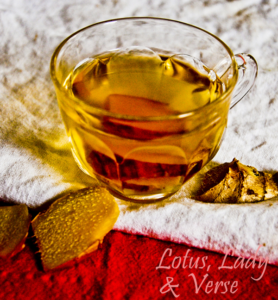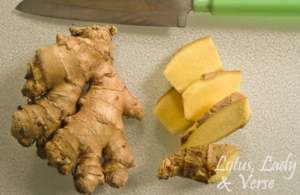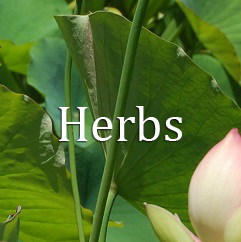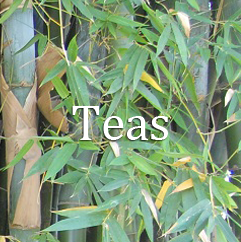The New Age Herbalist presents us with a holistic and nourishing view [Read more…]
Home Brew
The Coffee Lover’s Diet: Change Your Coffee, Change Your Life. / Bob Arnot, 2017. William Morrow. 373 p., charts and tables, notes, resources. No index. [Read more…]
Last-Minute Gift Cookbooks!
Ginger Tea
|
|
Plain and simple, the taste of ginger tea is anything but. Its really zingy, spicy taste can be as hot as you want, or as mild. But be aware, very pungent tea might produce a lot of sweat, create a hot and dry body condition, or even thin your blood past a level of comfort. Pregnant or menstruating women should not use ginger tea. It’s such a strong substance that before using it, you want to be sure you’re not setting up complications for your body. So, if you’re taking any medications, ask your doctor if you can have ginger before you drink this tea.To make ginger tea, start with a clean piece of ginger root—run it under water briefly to make sure no debris clings to it. |
|
|
Pry a 1″ chunk off the hand of ginger, then cut the chunk into slices about 1/8″ thick. It’s okay to leave the skin on if the root is sliced.
Place the ginger with 2 cups of water into a small saucepan with a lid and bring to the boiling point.
Then at the rolling boiling point, turn down the heat slightly to boil gently for 15-20 minutes. You want the water to be slightly golden and see that the ginger is tender.
Take the saucepan off the heat and allow to cool slightly before serving hot. Or allow to cool completely before taking the tea. Remove solids and save to julienne for stir-fries, soups, etc. For a mild-tasting ginger tea, use less ginger to begin with—only 1/2″ ginger root. I like GreenMedInfo: the World’s Natural health Resource an online service which posts both articles and research findings for many substances from plants. In one article, ginger’s benefits are discussed. |
Author Maria Noel-Groves suggests ways to use ginger for healthful digestion. See my post Balance is Everything Healthful here.
And for plant enthusiasts, growing ginger is easy—if you live in a subtropical or tropical locale! Otherwise you can read more about ginger as a green plant, with beautiful flowers and a health-giving root here.
Connect with Nature, Your Nature
Recipes from the Herbalist’s Kitchen: Delicious, Nourishing Food for Lifelong Health and Well-Being. / Brittany Wood Nickerson. Storey Publications, 2017. 303 pages, illustrations in color. [Read more…]
- « Previous Page
- 1
- …
- 18
- 19
- 20
- 21
- 22
- …
- 46
- Next Page »





